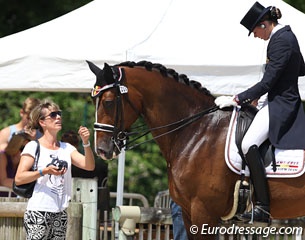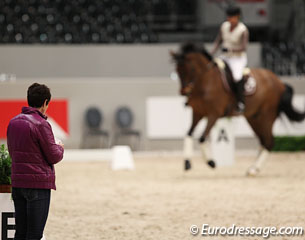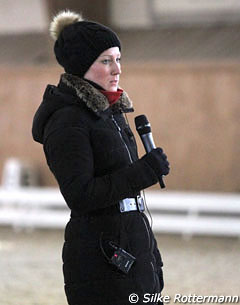
High performance women coaches are always intent upon unlocking the secrets behind success in the daunting Olympic environment, with success being defined as winning that elusive Olympic medal. Researchers Cari Din and Penny Werthner position strong and committed leadership as an essential ingredient of such success.
Demanding the Details
Each coach and athlete described the coach leadership that preceded their Olympic medal performance as demanding. The coaches communicated clear expectations to their athletes and staff every day in the months and years leading up to their Olympic moment. One athlete said: “She pushed us so hard; it was extreme preparation and she had extremely clear expectations. She was rigid in a good way!” This sentiment was echoed by all of the athletes in this study; moreover, each athlete appreciated the demanding dimension of their coach’s leadership and perceived it as absolutely necessary.
Another athlete said her coach “established the purpose of training every single day and the purpose of every little thing we did in practices and dryland and the games we were playing. Specific purpose was something she reinforced every single day.” This athlete’s coach echoed the description and attributed her team’s gold medal win to clarifying her expectations daily. The coach said: “Having the details right is everything because winning is in the details, which comes from planning and preparation. We won because we were the most prepared. Period.”
The idea that every detail was anticipated and integrated into the preparation of these medal-winning performances was part of each individual coach and athlete story. The phrase, “no stone was left unturned”, surfaced repeatedly in the interviews.
Building Relationships
When the coaches and athletes were asked about the role of the coach-athlete relationship in their Olympic success, everyone said, in their own way, that it was vital and foundational. The phrase, “it was huge” was used many times to describe the relationship between athlete and coach within this high performance sport context. A great deal of research has examined the crucial role of the coach-athlete relationship and the leadership stories shared in this study emphatically support the need for a healthy working relationship between coaches and Olympic medal-winning athletes.
One athlete reflected on how the coach-athlete relationships were built in her Olympic year. “You really need to get to know each other because those relationships are huge...we spent so much time together travelling away from home, but together with our team and training! And we spent the time, a ton of time, together, which allows those relationships to grow.” When she looks back at her career as an Olympic medal-winning coach in multiple Olympics, this athlete’s coach said: “I am most proud of the relationships. We made it through some ugly, ugly times because of those relationships. Today, I am most proud of that.”
 Another coach who has led athletes to multiple medals at more than one Olympic Games spent most of her interview describing the pivotal role that the coach-athlete relationship plays in her work. She said: “They [the athletes] have to fully trust me and that comes over time. We talk a lot and they know I won’t let something be wrong or left unsaid. When athletes totally trust you and trust your program you have the chance to develop them properly.” The athlete who worked with this coach called the relationship they built and nurtured “magical”. “I had absolute faith in how I was prepared and how I would race because of that relationship.”
Another coach who has led athletes to multiple medals at more than one Olympic Games spent most of her interview describing the pivotal role that the coach-athlete relationship plays in her work. She said: “They [the athletes] have to fully trust me and that comes over time. We talk a lot and they know I won’t let something be wrong or left unsaid. When athletes totally trust you and trust your program you have the chance to develop them properly.” The athlete who worked with this coach called the relationship they built and nurtured “magical”. “I had absolute faith in how I was prepared and how I would race because of that relationship.”
The third coach agreed that the coach-athlete relationship is a cornerstone for developing podium performances. She added that her leadership role includes building relationships between all stakeholders who contribute to developing Olympic medal outcomes. This network of people includes integrated support team (IST) members such as psychologists, physiologists, health care providers, and the group of athletes who train together yet vie for spots on the team each season. She said: “We have had the most success when everyone is connected and they have a defined role that we recognize and celebrate.”
Role clarity and recognition was something two of the coaches and all four athletes said contributed to their performance success. Building relationships is critical in performance-driven sport, not only between athlete and coach, but also between IST members and teammates.
Consciously Creating Your Culture
All three coaches were conscious of the culture and environment they created for their teams. One coach summarized the role of the coach in structuring a sport culture that develops medal-potential performance when she said:
"My role was to create an environment that supported podium performances. So I had to make sure I had the right IST in place and that they were there with a purpose. I made sure they knew their role, they had to put their ego on hold — it’s not about you, it’s about the performance. I had to draw the best out of each person and manage things that weren’t great about them.”
The belief that coaches pulled the best from their IST and their athletes emerged in many interviews.
Part of creating a culture that facilitated Olympic podium performances included structuring athlete interactions. One athlete summarized this when she said: “She [our coach] always talked about the theory of kitchen table talk. So you should be able to sit around and talk with your teammates and have kitchen table talk like you would with your family or closest friends. And that’s the environment we strive for but for sure it’s not always easy to do.” This athlete recognized that strong leadership was needed to establish and shape open, and sometimes difficult, communication between athletes. All four athletes said that a family-like culture was at times challenging to maintain but ultimately contributed to their medal-winning performances.
The three coaches had to lead and manage a diverse network of sport stakeholders in this sport context. One athlete said: “She [the coach] created a fair environment and a stable environment; she kept the variety of egos in check. That’s strong leadership and that’s the part of her leadership I valued most.” The coach described in this quote said in her own interview: “I was creating an environment where we could achieve our goals. Sometimes I was protecting it, sometimes enhancing it, and sometimes challenging it.”
All three coaches mindfully oversaw the environment and culture in which their Olympic athletes developed.
Maintaining a Solution-Focus
 Being solution-focused means seeing mistakes and challenges as opportunities to learn. Solution-focused leadership was described by each coach and athlete as a factor that contributed to their podium outcomes. At the core of this theme was a drive to learn as much as possible each day during the years and months that preceded the Olympic Games. All three coaches and the four athletes described their solution-focus as an analytic tenacity — each one was driven relentlessly to discern incremental adjustments that would improve their performances.
Being solution-focused means seeing mistakes and challenges as opportunities to learn. Solution-focused leadership was described by each coach and athlete as a factor that contributed to their podium outcomes. At the core of this theme was a drive to learn as much as possible each day during the years and months that preceded the Olympic Games. All three coaches and the four athletes described their solution-focus as an analytic tenacity — each one was driven relentlessly to discern incremental adjustments that would improve their performances.
One athlete said: “We were [the athletes and coach] constantly figuring out how to get better; all we did was problem solve!” She described her team’s post-practice and post-game debrief as a meeting that involved asking questions, brainstorming, and looking creatively at difficult issues the team faced.
Another athlete, in talking about solution-focus, said: “It’s being conscientious, always paying attention and learning — and that’s exhausting — the amount of focus it takes is off the charts!” This athlete described proactively seeking support for small issues that could become real barriers to her performance. She sought sleep, equipment, psychological, and other experts in her unequivocally solution-focused bid for a medal.
One coach said: “You have to learn something from everyone and create a learning organization for your people. Leadership is about asking: How can we make this better?” Her quote, to an extent, distills the essence of solution-focused leadership, which is linked to cultivating a commitment to learning and nurturing that leadership concept in the people you lead.
Conclusion
Demanding the details of performance and communicating clear expectations to both athletes and sport stakeholders contributes to developing best performances. Building relationships with athletes, between athletes, and between the extended network of people who make up sport teams today has a positive impact on performance. Consciously overseeing the culture in which your athletes and staff prepare is a vital part of the leadership best practices the coaches in this study used. Maintaining a solution-focus is key for leading athletes to a podium performance. A coach who values feedback, effort, and learning is solution-focused. Women coaches developing athletes in the performance-driven context can reflect on these four practices and decide how to integrate them into their own coaching.
by Cari Din and Penny Werthner
Source: Canadian Journal for Women in Coaching
Photos © Astrid Appels
Related Links
Canadian Dressage: Hanson-Boylen and Lane Team Up for the Future
Williams and Bredahl-Baker Named US Dressage Youth Coach and Assistant Dressage Youth Coach
Wanted: Australian Dressage Coaching Consultant